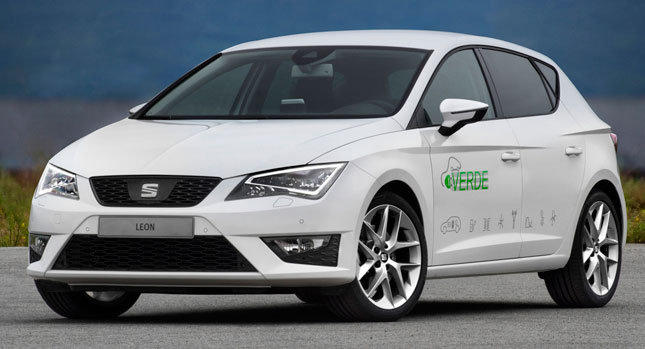Seat has presented a plug-in hybrid prototype based on the latest Leon compact hatchback as part of the Cenit Verde public-private project, which is devoted to the study and development of the technologies designed to facilitate the introduction of the electric vehicle in Spain.
The prototype is equipped with a 75 kW (100 hp) zero-emissions electric motor as well as a 1.4-liter 90 kW (120 hp) gasoline engine with a 6-speed gearbox adapted and optimized for hybrid driving.
According to the VW Group-owned automaker, the Leon Verde has an electric mode range of 50 kilometers (31 miles), thanks to an 8.8 kWh Ficosa battery, and an integrated advanced cooling system for the optimization of heat management.
Seat didn’t just stop at simply making an plug-in hybrid, as together with partners Cobra, Endesa, Iberdrola and Red Eléctrica de España, it defined a system of tariff negotiation and smart management which allows for full interaction of the vehicle with the electricity grid.
This makes possible the efficient recharging of the vehicle when overall energy consumption is low. Therefore, recharging at times of energy production surplus is incentivized, and the use of renewable energy sources is encouraged. For instance, in the case of a vehicle parked for 12 hours, recharge starts as soon as energy demand drops, and not immediately after plugging the vehicle into the grid, thus reducing the cost of the recharge.
Fitted with a Lear 20kW on-board battery charger, the Seat Leon Verde allows for two-way connection to the grid and not only for battery recharge but also for the vehicle to feed-in electricity to the grid itself.
The project has also developed the Driving Cycle Predictor, a smart system that memorizes the routines and driving styles of each user. The device predicts habitual routes and detects drivers’ mood-associated driving styles in order to optimize energy consumption and cut CO2 emissions.
By Dan Mihalascu
PHOTO GALLERY











